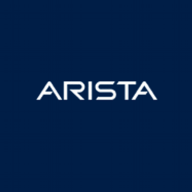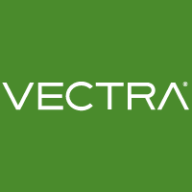

Vectra AI and Arista NDR are prominent competitors in the realm of network detection and response solutions. Vectra AI appears to have the upper hand due to its precise detection capabilities through AI-enabled filtering and triaging, which are highly praised in reducing alert fatigue.
Features: Vectra AI emphasizes detection precision with AI-enabled filtering and triaging, comprehensive attack lifecycle visibility, and risk-based threat prioritization. Arista NDR is known for its detailed traffic analysis, enriched security insights, and real-time enhanced visibility, coupled with its praised detailed reporting capabilities.
Room for Improvement: Vectra AI could benefit from better integration with third-party systems and improved management of complex host-driven threats. Enhancements for tracking multiple attack sources and better integrating host behavior analysis are needed. Arista NDR should expand its geographic presence and enhance engineering support, especially in underrepresented markets.
Ease of Deployment and Customer Service: Both Vectra AI and Arista NDR offer strong technical support. Vectra AI is recognized for its robust customer service structure, ensuring responsive support. Arista NDR is appreciated for its responsive customer service due to a close-knit support team, but might benefit from an expanded support infrastructure as the company grows.
Pricing and ROI: Vectra AI’s licensing is costly but seen as a valuable investment for enterprises focusing on threat detection. Arista NDR offers competitive pricing, making it a budget-friendly option, ideal for firms seeking cost-effective MDR service integration. Both solutions provide ROI by reducing incident response times and enhancing network security efficiency, though Vectra AI’s complex licensing may deter some customers.
| Product | Market Share (%) |
|---|---|
| Vectra AI | 15.6% |
| Arista NDR | 3.9% |
| Other | 80.5% |

| Company Size | Count |
|---|---|
| Small Business | 5 |
| Midsize Enterprise | 2 |
| Large Enterprise | 7 |
| Company Size | Count |
|---|---|
| Small Business | 9 |
| Midsize Enterprise | 10 |
| Large Enterprise | 27 |
Arista NDR (formerly Awake Security) is the only advanced network detection and response company that delivers answers, not alerts. By combining artificial intelligence with human expertise, Arista NDR hunts for both insider and external attacker behaviors, while providing autonomous triage and response with full forensics across traditional, IoT, and cloud networks. Arista NDR delivers continuous diagnostics for the entire enterprise threat landscape, processes countless network data points, senses abnormalities or threats, and reacts if necessary—all in a matter of seconds. The Arista NDP platform stands out from traditional security because it is designed to mimic the human brain. It recognizes malicious intent and learns over time, giving defenders greater visibility and insight into what threats exist and how to respond to them.
The Advent of Advanced Network Detection and Response & Why it Matters
Vectra AI enhances security operations by pinpointing attack locations, correlating alerts, and providing in-depth visibility across attack lifecycles, ultimately prioritizing threats and improving incident responses.
Vectra AI integrates AI and machine learning to detect anomalies early and supports proactive threat response. Its features like risk scoring, alert correlation, and streamlined SOC efficiency are supplemented by integration with tools like Office 365. Users highlight integration, reporting, and customization challenges, alongside limitations in syslog data and false positive management. They seek enhancements in visualization, UI, TCP replay, endpoint visibility, and tool orchestration, with requests for improved documentation, licensing, and cloud processing innovation.
What are the key features of Vectra AI?In industries like finance, healthcare, and critical infrastructure, Vectra AI is crucial for threat detection and network monitoring. Entities use it for identifying anomalous behaviors and enhancing cybersecurity by responding to network activities and analyzing traffic for potential breaches. It operates on-premises and in hybrid cloud settings, enabling threat detection without endpoint agents and supporting compliance and policy enforcement.
We monitor all Network Detection and Response (NDR) reviews to prevent fraudulent reviews and keep review quality high. We do not post reviews by company employees or direct competitors. We validate each review for authenticity via cross-reference with LinkedIn, and personal follow-up with the reviewer when necessary.